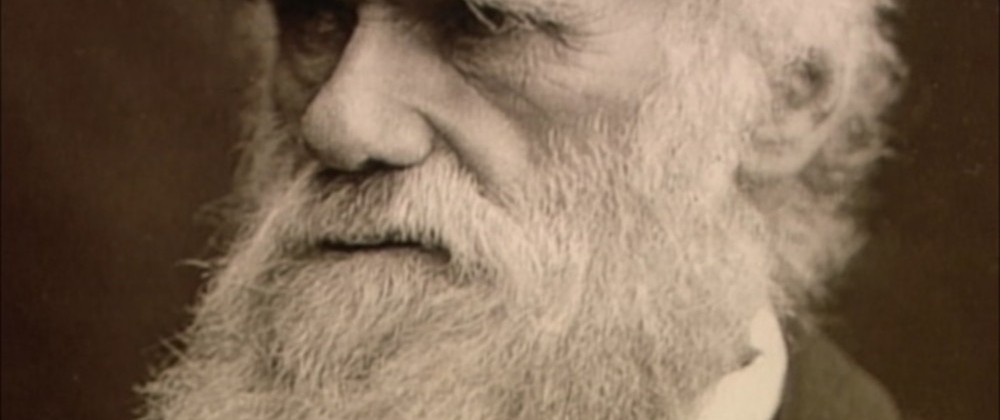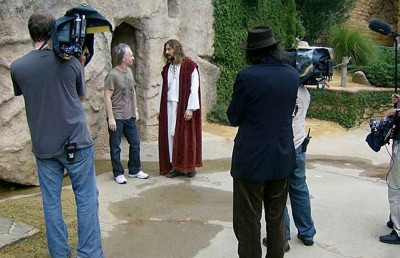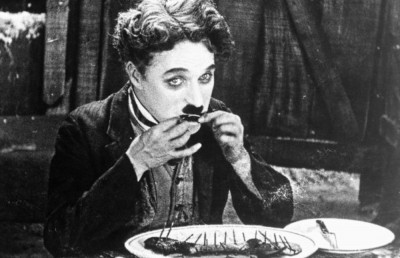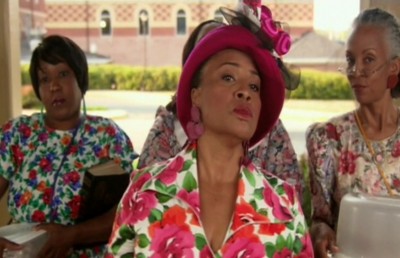Humour – A Synthesis of Philosophical, Psychological, and Evolutionary Approaches. Part 2: The Cognitive Aspects of Humour

Through the framework of cognitive Psychology, Jerry Suls has attempted to explain humour by creating a theoretical computer-like program on how incongruity works in the mind. Suls’ “Two-Stage” model of incongruity resolution looks at comedy stimulus as input into the mind which creates an output of Laughter. At the first stage of this model, information (joke, cartoon, situation, etc.) is perceived by a person and the person creates a “prediction” or “expectation” based on this information. If the expectation is met then no humour occurs, but if the expectation or prediction is not met then the second stage of humour begins where the person tries to resolve this incongruity. If resolution is found (the brain finds a way to make sense of it) then humour occurs; if it is not found we just experience puzzlement.
We can further explore the incongruity and perhaps get a better picture of what it means if we employ the idea of cognitive schemas. Cognitive schemas is a theoretical idea of the mind: our thoughts and expectations about the world. As we move around and learn about the world we assimilate information and this new material that we acquire is later accommodated into our old information as we change our internal structure. Through this process we create cognitive schemas, basically models of the world. These schemas develop because they work in helping us to understand complex experiences of the world, link them together, and separate them or discard them if necessary. For instance, we have all assimilated information about cups in our lifetime and the properties of cups, we assume, is that we can pour liquid into them, carry them around without water falling out, and then be able to control the cups so liquid goes into our mouths, etc. This would be part of our assimilated information and created cognitive schema for a cup and it allows us to see other cups and assume that they will be able to do all the things that we expect cups to do without us having to test and observe all the details of the cup every time we use one. If we replace “expectation” with “cognitive schema” in Suls’ model then we could avoid the prediction stage. The new model would read:
Cognitive Schema = Perception = If it fits into Schema then no humour, if not then the perceiver attempts to accommodate = if accommodation is not possible there is puzzlement = if rule is found and accommodation is made then we have humour.
Perhaps part of the joyful emotion here would be the joy in making sense of a troublesome problem (or the joy in making sense of a troublesome universe). Perhaps even more problem solving joy comes from the fusion of concepts of more divergent schemas. If “God” and “farting” could be mixed togother it would most definitely be funnier then mixing God and Jesus (Last two paragraphs synthesized from Martin 64-92, Gardiner 85-128.)
Another point to make about joke stimulus is that it is not necessarily words or images in themselves that are funny but rather the ways these things are represented in the conceptual framework. George Lakoff and Mark Turner’s work on metaphor theory points to a brain where all concepts are structured in terms of relationships across different senses and that the linguistic device of metaphor is not interesting because of anything inherent in language but, rather, because it shows relationships between concepts and senses. First they show that metaphor is not only a poetic device but a rather common language. Here is a phrase taken at random from Martin’s Psychology of Humour book to illustrate: “This approach did not seem to capture some of the dimensions of sense of humour that were of interest to this new generation of researchers” (Martin 206). The italicized words in his sentence (my italicization) are metaphorical even though they are commonplace. A “sense of humour” is being looked at as having dimensions (and humour itself is being looked at as a sense), while an approach is being seen as something which can grab or capture things even though both concepts are abstract without any inherent properties. Metaphor like this is extremely common in language even though we don’t always notice it.
The conceptual functioning of metaphor (how we look at one concept in terms of another) is grounded in our sensory experience. Lakoff and Turner calls this the “embodied mind” theory. Take for example the way we look at money and prices. We often understand MORE money as being HIGH somehow. When we say prices are rising or going up there is no physical property about money that means it should be looked at as HIGH, LOW, WIDE, etc. We have learned through experience with our language culture (price charts, etc.) that money should be looked at as being UP and in a way we choose to see that way either out of laziness, the desire to share patterns of behaviour with others, or out of genuine usefulness. We perhaps learnt the concept of MORE money being UP because we have seen piles of bills lying around. However the general metaphorical pattern “MORE IS UP” is not limited to money and can be applied to other phenomena. “The number of diseases each year keeps rising,” and “The word count of this essay has gone up” are just a couple of examples of how we link the abstract concept of UP with MORE. Not only are these abstract metaphorical patterns able to be applied to different specific circumstances but they also exist in some sort of conceptual framework with other ideas. MORE becomes linked/related (pick your metaphor wisely!) to UP which both are also related to GOOD (e.g. I feel so high right now, God is up there and the Devil is down below, people who are good at things have more skill than most, etc.). Also every time we talk about abstract concepts as things (e.g. the good in her, empty your mind, the journey of philosophy, etc.) we give them properties they don’t have (we often treat them as having dimensions, speeds, being like containers, etc.). We also see this sort of metaphorical grounding to be based across senses. We talk about concepts in terms of visual and tactile senses (both being ways in which we can understand UP) however we also interact hearing, smell, and taste into the framework of concepts (e.g. this paper wreaks of greatness, that girl has a sweet personality, etc.). The “embodied mind” is this conceptual grid of cognitive schemas in the brain related like metaphors (which are surface evidence of the inner connections) and shaped by our sense impressions as we move through the environment. These last two paragraphs have been a quick foundation into embodied mind and the conceptual network of the brain and metaphor theory but how can they relate to humour? (Synthesized from Turner and Lakoff, Lakoff, and Danesi)
Sakis Kyratzis explored the relationship between metaphor and humour and noticed that both require “duality” in order to operate (Kyratzis 15). Metaphor is often understood in terms of Target and Source domains (Lakoff, Kyratzis). The Target in the above example would be “price” and the source would be the concepts surrounding “UP” which are being mapped onto price. As we see in incongruity theories Humour functions in a similar manner with two ideas first being fused. But where humour differs from metaphor is that for incongruity to be resolved the connection must be revealed (incongruity resolved) to be broken up or “deblended” (Kyratzis 16). We often find interesting metaphors amusing because they connect seemingly diverse regions. We can look at “life” as a “bowl of cherries”, “box of chocolates”, “riding a bicycle”, etc. We know that life is not these things yet we see the connection and so we laugh. When Mitch Hedberg says “I drank boiling water because I wanted to whistle” he is showing a connection between the concepts of steam whistles and regular whistling. There is a fusion in the patterns (and his dumb demeanor is that of someone who isn’t quite smart enough to differentiate the concepts) yet to resolve the joke we separate this confusion. Early silent films used visual metaphor constantly. In The Gold Rush Charlie Chaplin looks at a boot as if it were a turkey or chicken bone (mapping the shape of the boot and the actions associated with eating a chicken bone) showing how visual pictures can relate through conceptual mapping to produce humour. In fact, all the actions of the physical comedians seem to be as if to map some sort of other property onto their bodies. As mentioned earlier Bergson sees the metaphorical framework of “mechanical” being mapped into the human realm (we see this with Three Stooges and Buster Keaton). We can even imagine a musical performance that makes us laugh because at an important climax the tuba makes the sound of the fart. This score would first create a sound object that is romantic/serious/intense and then map the properties of a human fart onto the sound of the tuba to create an incongruity in conceptual objects.
Evolutionary Psychology, Langauge, Laughter, and the Biological Basis of Comedy
Exploring our evolutionary past can give us explanations to why are culture is what it is today. Jonathen H. Turner and Aexandra Maryanksi’s book, On the Origins of Societies by Natural Selection, attempts to connect our current day social organization with our evolutionary ancestors and in the process reveal much about language in general and this work can be related to laughter. The evolutionary story of Turner and Maryanski begins 23-16 million years ago (Ma, million years before present), or during the early Miocene era (16.4-5.3 Ma). Around this time apes and monkeys began to diverge from a common ancestor and the ape line (of which we are descendants) was the far better adapted of the two lines as the fossil record shows far more and diverse ape fossils then monkey fossils. Miocene jungle extended up into areas such England, and the fossil record shows early apes throughout most of the globe. Around 11-6 Ma in the late Miocene era the Earth’s climate began to cool again and jungles began to shrink back to states similar to what we have today. For reasons not entirely known (no theories seem to be that strong) monkeys began to be the better adapted of the two lines and the ape population began to significantly shrink, a pattern that has continued to this day (most ape species are endangered except for humans).
The trouble for these late Miocene Apes was now how to get food and apes started moving to reach the hard “terminal ends” of branches. This environmental challenge was written on the anatomy of apes who developed a better ability to stand upright, longer arms, flexible wrists, fingers, shoulder joints, sensitive fingertips, and brachiation (ability to swing from limb to limb). Further more, the intense pressure to journey into difficult arboreal heights shifted the primary senses of apes from olfaction to vision and with this shift to vision the increase of the cerebral cortex needed to process the shift from 2 dimensional space (on the ground) to 3 dimensional space (also includes up and down).
Around 2-3 Ma selection pressure continued to intensify for these apes and our ancestors (probably Australopithecus) began to move out into the dangerous Savannah’s of Africa to search for food sources. The shift from 3 dimensional jungle to open plains was dramatic and far more dangerous. In the jungle there is defence in trees but the open planes (with ferocious wildcats and other creatures) brute force is generally the defining factor of survival. It is here that our ancestors (who have no individual brute force) began to develope complex collective action in groups, of which we now primarily use language to achieve. The story goes that at first the large cerebral cortex we developed to process visual information was then used to control emotional outbursts and then later to direct emotion at other individuals of the group. Because we had not yet developed the complex mechanisms for vocal utterance and perhaps because this visual brain was so closely linked with locomotive motion, it is thought that the cortex first operated to control body gestures and facial expressions. Turner and Maryanksi put forward the claim that the body language and facial gesture we have today consist of fundamentally universal (with room for culture to expand) symbols of emotion that exists in temporal call and response like structures (or “dances”) between memebers of groups. They believe that this temporal sequencing of arbitrary (yet biologically rooted) symbols is the foundation for spoken language. With this already established physical communication, complex verbal communication was able to establish itself without alienating any speakers (if the whole vocal system suddenly erupted in one ape who would that ape talk to?). To summarize, first we used body gestures to create states of empathy and collective action, then the vocal system evolved out of this. (The last 4 paragraphs summarized from Turner and Maryanski 1 -128.)
Laughter fits in with this evolutionary story of language in that it is part of the early emotional communicative system. Perhaps the reason that laughter is “economical” (a-la Koestler) is because it is does a two-for-one by not only releasing emotional energy but also creating a moment of communication. If we want to look for evolutionarily adaptive functions of laughter we might even speculate that laughter is related to the origins of language. Recent studies show that mirror neurons force states of empathy in individuals. We are hardwired to relate to other people’s emotional states through the physical gestures, facial expressions, and vocal utterances which we perceive. Maryanski and Turner show that this emotional language is the foundation for the more complex collective action states that we see today (language, the Internet, etc).
But what state are we sharing with humour and emotions of mirth? How is this state adaptive? Nico H. Frijda (who has done extensive research into emotions, perhaps the world’s foremost expert) understands emotions being primarily ways of altering our position in the environment either by getting us ready to act or by actually forcing us into an action. In Frijda’s model fear, for example, can be characterized in the way it forces us to tense our muscles, cover our eyes, or flee a situation. These behaviors do not always occur however because “action-tendencies” are more like internally stored patterns of action that a person may control depending on the situation, the amount of emotional energy a person has at the time, and the probability of the action helping the person. So whether or not these internally stored commands are executed depends on the emotion, the person and the situation (Frijda 1986 p. 69-90 , Frijda 2000 p. 59-84). Emotions in this framework are adaptive because they force us into action quickly by making us run from prey, look at attention, or fill our hunger. In her paper, “What Good Are Postive Emotions?”, Barbera L. Frederickson attempts to understand why positive emotions seem to elude this framework (which has mostly focused on negative emotions) and explain why positive emotions are adaptive in our species. Positive emotions, says Frederickson, do not force us into action (in sense shrinking our momentary choices of action) but actually work to broaden our minds and increase our “thought-action repertoire” (Frederickson 303). She offers examples of empirical research that shows positive emotions broaden “attention” (giving more things our full attention instead of being caught up with unimportant details), “scope of cognition” (more unusual connections and inclusive categories of thinking), “scope of action” (show more flexibility in behaviour), “intellectual resources” (better at empirical testing like school exams), and “social resources” (altruism, cooperation, and just having more friends) (Frederickson 303-307). While negative emotions are adaptive because they create immediate ways of helping a species member Frederickson sees positive emotions as being beneficial “in the long run” as the broadening of resources increases the ways an individual can act in a given situation and so increasing chances for survival (312) .
Mathew Gervais and David Wilson Sloan link laughter with other non-human primates and make the conclusion that laughter was originally (through evolution) created through tickle and play stimulus. Tickling and play are usually accompanied by grooming and feeding in chimpanzees and other primates leading to evidence that it largely “facilitates group functioning” (Gervais and Wilson 414). In apes, they say, the origins of the laughter signal are seen in our chimpanzee cousins as an “open mouth play face” and they feel that the move to the Savanah 2-3 Ma gave humans first the upright anatomy which complex vocalizations were built on but also the selection pressure necessary (predators) to create highly organized creatures. Gervais and Wilson see laughter as we know it today to be an extension of the ape play face. As Maryanski and Turner see the original form of communication to be gestural Gervais and Wilson see laughter’s original communicative act to be in smiling and open mouthed laughter (called “Duchenne laughter”) which functioned through mirror neurons in creating empathetic states of mirth in groups giving particular groups evolutionary advantage. Without fully understanding the complex mechanisms of this they find a “logical result of an extension of playful forms of behavior to the more abstract intellectual sphere of ideas” (Mcghee, as qouted in Gervais and Wilson). It is amazing that if humour has its roots in ape play that it finds form in such complex (conceptually/metaphorically/culturally/emotionally) jokes as Chris Rock’s “If you’re Black, you gotta look at America a little bit different. You gotta look at America like the uncle who paid for you to go to college but also molested you.”
Two other phenomena point to a connection between laughter and our evolutionary past: tickling and group laughter. Laboratory studies find a connection between tests of those who laugh at films and those who are ticklish (Martin 174). An interesting thing about ticklishness is that it is incredibly hard to tickle ourselves or, as fMRI (Functional magnetic resonance imaging) studies show, there is “lower activity in the cerebellum when .. tickling (is) self-produced” (175). This might suggest that tickling is related to the rough and tumble play system of apes, or, perhaps more certainly, it is at least related to human interaction. There is evidence that laughter is a primarily social signal in studies that people generally laugh not at all on their own but increase the amount and loudness of their laughter as the amount of people nearby increase (supporting the hypothesis that it is a play signal). An interesting 1992 study by Robert Provine found that a “laughter box” (a machine that generates canned laughter just like on sitcoms) was enough to produce laughter in individuals even though no incongruous material was present. Provine would simply present research participants with mundane phrases such as “It was nice meeting you” followed by the laughter box (Martin 129). Spending time at a coffee shop watching giddy friends interact confirms that often times people will laugh at the simplest things and that the social and emotional aspect is far stronger than any interesting cognitive trick. People will laugh hard at a professional comedian and we will triumph this comedian as being a great producer of laughter but if we pay closer attention to our everyday lives we can find even more sustained laughter amongst a group of friends hanging out.
There is evidence that our evolutionary cousins, apes, use laughter as a means of signalling social play. Charles Darwin noted a “staccato, guttural, throaty, panting sound” along with an “relaxed open mouth play face” (Martin 166) that chimpanzees would make during rough and tumble play. Modern research has confirmed these perceptions and it seems that these chimpanzees are using this as a way to signal joy to each other and to allow “rough and tumble” activities to go on without any of the group taking them as a real threat (167). Since modern chimpanzees and apes both have some form of laughter we can assume that our nearest common evolutionary descendant also had this trait and so laughter seems to be something very old and ingrained in our biology. Today we seem to use jokes and comedy in ways that resemble play-fighting. By teasing, making fun of things, and by using aggressive and sexual topics in humour we seem to be trying to fight and argue but in a fun and playful manner that need not be taken seriously. As the apes get exercise from their physical world through play-fighting, are we somehow getting mental exercise through our use of play-ideas? If this very interesting connection between the pre-conceptual human (man without language and large frontal lobe) and modern human (who uses language and the conceptual frontal lobe) exists then the connection between ideas and biology through the emotional system should be explored further.
Section 8 – Conclusion
Based on the research in this paper it is plausible that humour is rooted in the positive emotional framework in early hominids; and the vocalizations of laughter and visual gestures of smiling that accompany the process are part of an emotional language system which precluded the verbal language we use today (and still coexists along with it). The connection between ape-play and our use of humour as a way of connecting incongruent ideas seems to create a continuous line of seeing humour as the shared joy of learning and figuring out the environment and broadening our thoughts about it. The homosapien stimulus of humour (incongruent ideas processed through the conceptual framework of the mind) create emotional charges of joy or puzzlement which can often be enhanced through the use of emotionally charged topics (sex, aggression, racism, etc.). Laughter may simultaneously be a way a communicating and discharging the emotional energy (action tendency) generated by comedic stimulus. To me the most interesting area for future research would explore the connection between the cultural modes of comedy we have today and the primitive brain discussed through evolutionary psychology. That our technology and various cultural products could be intimately founded upon basic emotional systems is an interesting idea. I think the stimulus of incongruity along with the lives of apes and early hominids could perhaps use a more concrete exploration. Questions like why we cry when see certain objects or words are along this line of thinking because it involves a non-physical stimulus which produces a very real physical response. Perhaps tomorrow’s comedy makers will be scientists.
Bibliography
Danesi, Marcel. Vico, Metaphor, and the Origin of Language (Advances in Semiotics). Bloomington: Indiana University Press, 1993. Print.
Fredrickson, Barabera L. What good are positive emotions? Review of General Psychology, 2, 300–319. (2000).
Freud, Sigmund. The Joke and Its Relation to the Unconscious. London: Penguin Books, 1978. Print.
Freud/Strachey(Trans.). Civilization and its Discontents, pb, 1962. New York and London: Ai 0393301583, 1961. Print.
Frijda, Nico. The Emotions. Cambridge: Cambridge University Press, 1986.
Frijda, Nico H, “The Psychologist’s Point of View.“Handbook of Emotions, Second Edition. Ed. By Michael Lewis and Jeannette Haviland-Jones New York: The Guilford Press, 2000.
Gardiner, W. Lambert. The Psychology of Communication. British Columbia, Canada: Trafford Publishing, 2008. Print.
Gervias, Matthew and Sloan Wilson, David. “The Evolution and Functions of Laughter and Humor: A Synthetic Approach.” The Quarterly Review of Biology, Vol. 80, No. 4 (2005). 395-430. Accessed Online February 2010.
Johnson, Mark, and George Lakoff. Metaphors We Live By. 2nd ed. Chicago: University Of Chicago Press, 1980. Print.
Lakoff, George (1993). “The contemporary theory of metaphor.” In A. Ortony (Ed.), Metaphor and Thought (2nd ed). Cambridge University Press, 1993. (pp.202-251). Print.
Koestler, Arthur. The Act of Creation (Arkana S.). Reissue ed. Boston: Penguin (Non-Classics), 1990. Print.
Kyratzis, Sakis (2003) “Laughing metaphorically: metaphor and humour in discourse.” [8th International Cognitive Linguistics Conference: July 20-25, 2003, University of La Rioja, Spain. Theme session: Cognitive-Linguistic Approaches to Humour] http://www.ling.arts.kuleuven.ac.be/iclc/Papers/Kyratzis.pdf Accessed April 2010.
Helitzer, Mel, and Mark Shatz. Comedy Writing Secrets, 2nd Edition: The Best-Selling Book on How to Think Funny, Write Funny, Act Funny, And Get Paid For It. 2 ed. Cincinnatti: Writer’s Digest Books, 2005. Print.
Martin, Rod A.. The Psychology of Humor: An Integrative Approach. 1st ed. Toronto: Academic Press, 2006. Print.
Maryanski, Alexandra, and Jonathan H. Turner. On the Origin of Societies by Natural Selection (Studies in Comparative Social Science). Boulder: Paradigm Publishers, 2008. Print.
Mcghee, Paul E.. Humor, Its Origin and Development. New York: W H Freeman & Co (Sd), 1980. Print.
“Theories of Humour.” Wikipedia. Accessed April 2010. http://en.wikipedia.org/wiki/Theories_of_humor.














